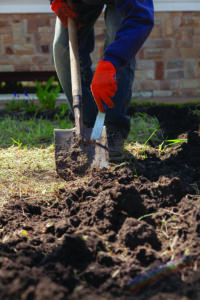Whether you are considering a new garden or are a few years (or decades) deep in one, pondering the proper fit for your family needs is a good gardening move.
You wouldn’t buy a 16-bedroom house for your family of four, nor would you get a one bedroom for a family of six. Too much room would be too much to maintain while too small could lead to overcrowding. Nor would you buy 50 bananas at the store for three people to eat in a week! Planning the size and quantity of plants in your garden is the same way — aim for efficiency and effectiveness!
First, decide what you are going to eat. No need to grow tomatoes just because everyone else does if your family won’t touch them. On the other hand, if making homemade salsa or sauces is on your list, you know you’ll want to factor in more than usual to accommodate the extras.
Look at your recipes carefully if you already have them. I’ve often found myself googling how to use up a veggie I have an abundance of, only to find the recipe calls for ¼ cup of the “key” ingredient. No need to grow and upkeep five pepper plants if you could get by with one for your pepper jelly recipe! 
Next, go shopping for the best fitting variety. Look at seed specifications and see what yields are like. With so many varieties and hybrids on the market these days, if your space an issue in your garden, take a minute to research high yield varieties to get the most bang for your space investment. It’s likely that you can also find plants aimed at compactness, like Spacemaster cucumbers.
If your wishlist is still lofty for your space, you may have to make some cuts. Something that grows and crawls like squash or watermelon or other “mound” or viney plants take a large footprint where you might be able to fit 2-3 other things in a smaller scale. Consider if that’s a tradeoff you want to commit to. Another way to trim up your list is to cross off anything finicky. Gone are my days of cluttering a corner of my garden for watermelons that got tossed to my chickens because they never would ripen quite right. If I know it’s something my garden struggles with, I put my efforts and energy elsewhere for the time being. Not to say you shouldn’t attempt a challenge, but with resources limited, challenges can also be the low hanging “fruit” to cut!
Another space problem can be plants shading out others. Primarily, we are looking at you, corn. If you can’t give tall plants a space off to themselves, look at where the sun hits your garden.
If your sun starts on one side of your garden and rises over it, plant it vertically or at the back or northern edge to make sure the rest of your sun loving plants have a fair shake at the shine. Tomatoes and peppers are another one that can creep in and block light, so don’t let them slip under your radar!
Of course, another way to problem solve corn is by utilizing it in companion planting such as the infamous three sisters of corn, squash and beans. If you can’t quite configure it right, it is also okay to buy corn at the produce stand. It is.
You’ll also want to think ahead to fall. Don’t take up all your garden space if you also want to put some pumpkins in there, which are typically in a mid-June to early July window depending on the variety. There’s also butternut squash and turnips to think about. If you have items with varying seasons, map out putting your spring mix lettuce in a spot you can take it out for fall kale.
As you plan, if you discover that you only need a few of something, utilize your local seed library! Often partnered with local Master Gardener chapters, many of our local libraries have seed catalogs filled with all kinds of goodies, ready for you to take what you need! Super picky and want to order your own seeds? Consider bringing your remainder to the library to label and leave for others.
Aside from space, consider your time. Garden time is often a relaxing space, but if you are in a season of summer sports or time away or other factors that limit your time, think about making your garden smaller for now before it starts to feel like a chore you are behind on.
If your favorite part of summer is a juicy tomato or you love clipping fresh lettuce for salads, just grow that.
You’ll feel better growing one thing really well than feeling stressed about maintaining a large garden that you may end up losing the battle to with nothing coming out just right. It can be hard to scale back when you’ve always done a certain way or a certain size, but it’s rare in life to have the exact same schedule and plans two years in a row!
Grow your custom growing skills by taking good notes to reflect on in planning in future years.
In the beginning of your growing season, note what varieties you planted and how many. As things start to grow, note what worked, what you may have not had enough of and even things like, “wish we had tomatoes around such and such timeframe.”
You can use these notes next year to plant earlier in the season or find a variety that matures quicker.
If you ran low on veggie ingredients, jot a note to add more. Did your neighbor’s Ring camera catch you leaving zucchinis on their steps every other day? Cut back your numbers! This can also keep you on track for rotating your garden layout every once and a while to give your soil resting time.
Taking the time to consider your family’s needs in crafting your garden layout will ensure that your garden is efficient in yields and in your time put into it.
Thoughtful planning will have you spending less time keeping up excess veggies your family won’t be able to eat and more time throwing some on the grill together!




